Been a while since I updated this. Lots of changes, some of which have been posts in the main section, so I'll try and be brief.
#1, My ATO system was a danger to itself and others. I knew it, but was waiting on the right equipment to fix it. Needless to say, the disaster happened before I got the chance to remedy the situation. Had a salinity disaster while I was out of town for a long weekend, and toasted almost all of my corals. Thank the universe this was still a new tank. I only took pics of a couple carcasses:
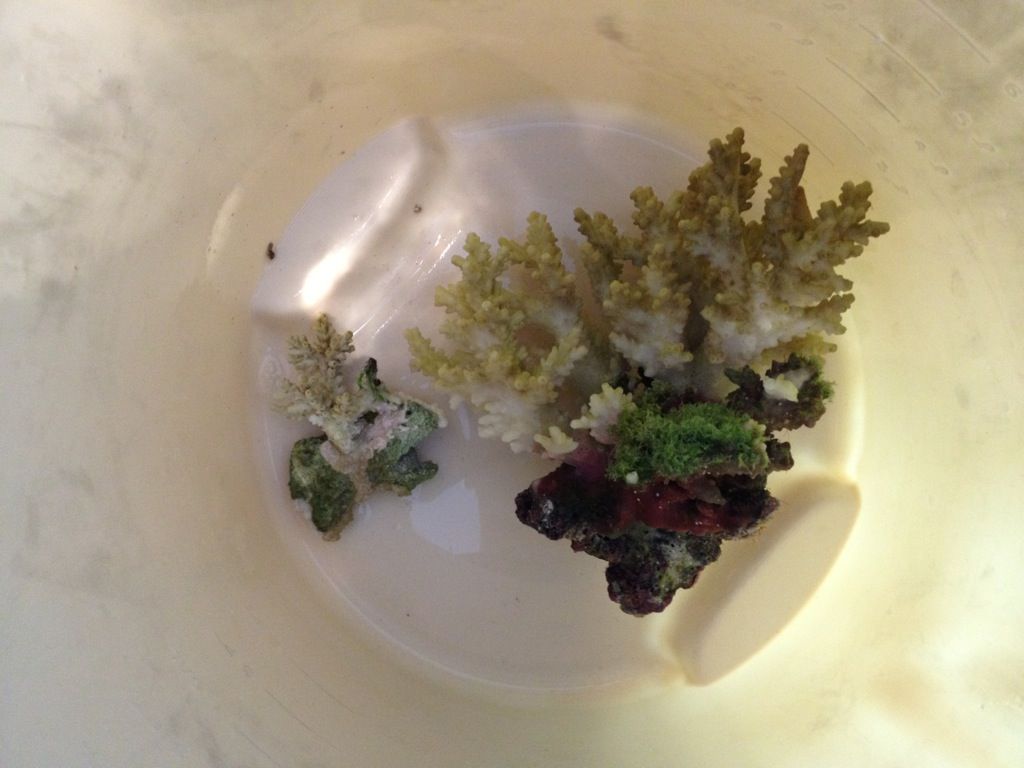
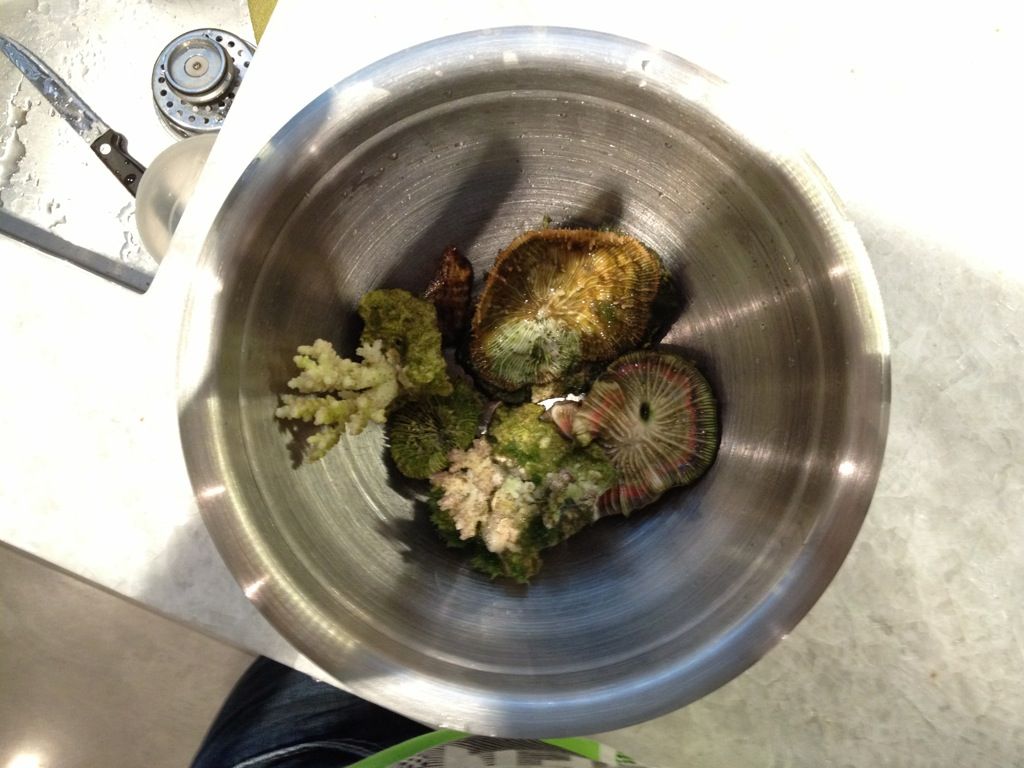
This whipped my butt in to gear (even if I couldn't really afford it) to finish my ATO system the way it was designed to exist. My R/O system now feeds a 50 gallon reservoir in the basement (instead of being the direct ATO system), and there are two pumps in that 55 gallon drum that 1. run the ATO and 2. Send up water for water changes when the time comes.
Remote R/O system:
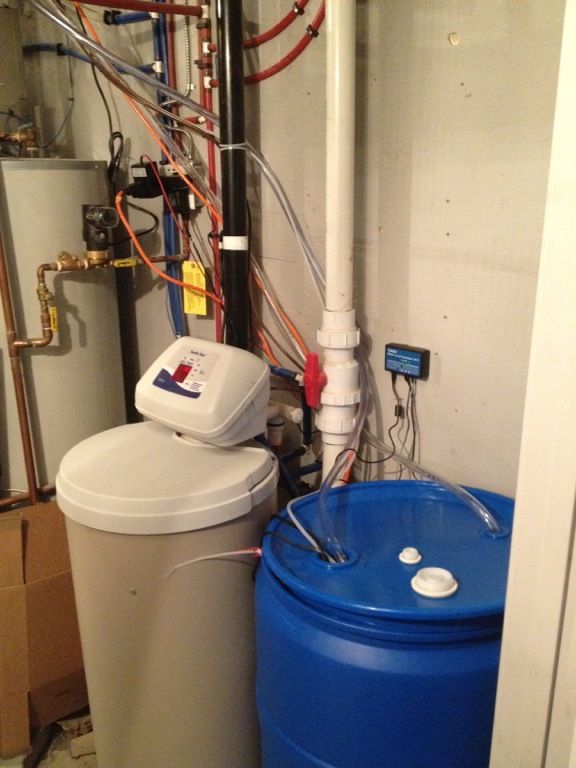
upgraded Tunze osmolator powered outlet:

How the whole thing runs through the floor:

Backflow preventer under the cabinet:

After the salinity issues, I had a serious outbreak of ich. Like, deadly. I lost about half my fish, and stopped the carnage by catching every single one of the buggers and converting part of my custom sump to a QT system. I had some issues with the cycle this created in the QT system, but as of a week or so ago, all toxic compounds were registering undetectable. My remaining fish are:
Copper band butterfly
Purple Tang
Powder Blue tang (a new addition to the QT system after the cycle was complete, my initial Powder Blue was lost in the ich outbreak)
Harlequin Tuskfish
mated pair of Bengali Cardinals
4 square spot anthias (1 male 3 females)
Longtail tripod fish
Leopard wrasse
My QT procedure has been to lower their salinity to 1.009 for 30 days after the last visible spot (10 days remaining), then I'll dose them with Seachem paraguard for 3 weeks. Then 2 weeks of observation to make sure the ich is gone. This will have left my Display fallow for 10 weeks. Seachem assures me that no part of Paraguard will remain 'active' after the treatment is complete, so I don't need to worry about the rocks and sand in my sump that will have been treated. I added a spare canister filter to the QT system, and both the nano LED light systems and light timer I had laying around, as my sump is normally unlit.
Here's some photos of the QT portion of my sump from today (the QT area is on the left, the return chambers to the main tank is on the right):

Close up:
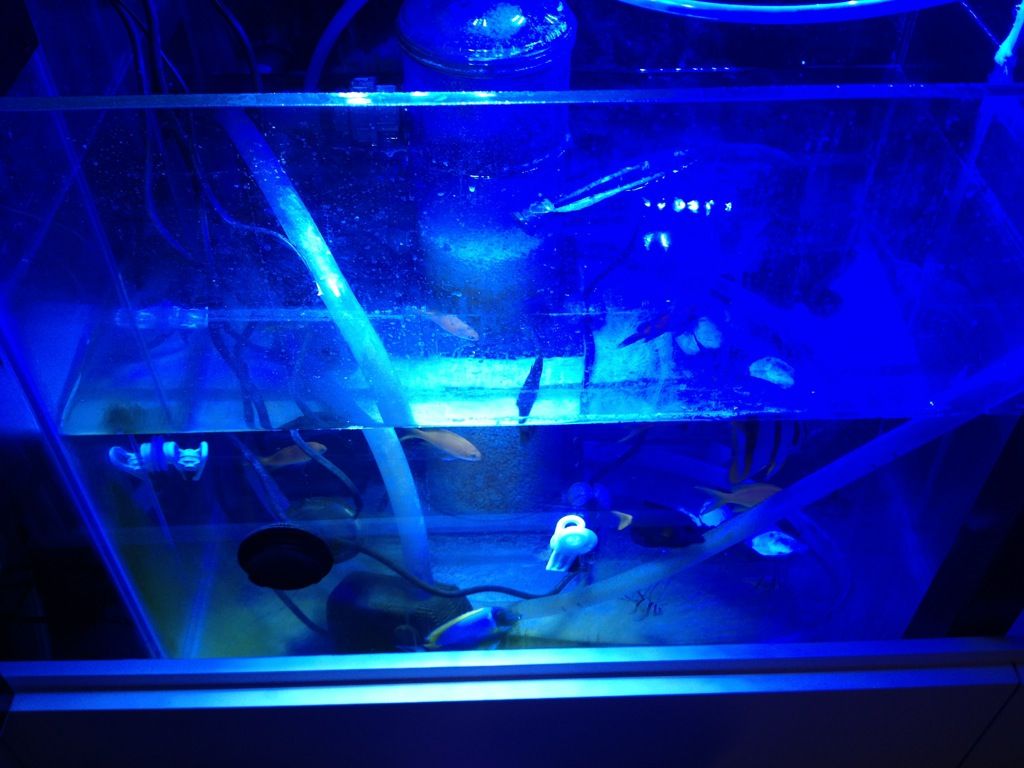
CBB hanging out near the pump that does double duty draining the Water Change Chamber (which also happens to be the main QT chamber ATM), and the return pump that drives the QT system:

In that time I've had ongoing serious issues with my overflows, as Herbie style overflows are really fickle when you've got your overflow plumbing all connecting to the same outlet in to the sump. I've got a forum thread about this in the main area so I won't elaborate here, but I'll just say that Herbie style overflows aren't always appropriate for every setup. Research them carefully for how they'll behave on your own specific plumbing set up before taking the plunge. I spent today converting my main overflow system to Dursos, which worked beautifully on my last 90 gallon tank. In a normal system they're a little noisier than a Herbie, but since my tank's plumbing is contained within the walls of my office, I don't notice it. Presently, I'm still using my double herbied gate valves (I think I described them a few pages back?) to control the water and bubble levels in the return chamber. This prevents splash-back into the QT chamber. It's not perfectly optimal, but when the QT process is over, I'll have a fickle free sump that still allows me to do mostly automated water changes.
I used plugs with threaded 3/4" holes in the top to cap my dursos, and drilled them just right to prevent full siphon while minimizing bubbles. Right now, since I'm doing this weird, not optimal, hybridized herbie'd durso, I don't have the threaded cap in, which means I'm still sucking some air down the drain pipe, but it's a controlled amount of bubbles, and I've got really fine control over the water level in my return chamber for the time being. It's also not that much louder than my last overflow system:
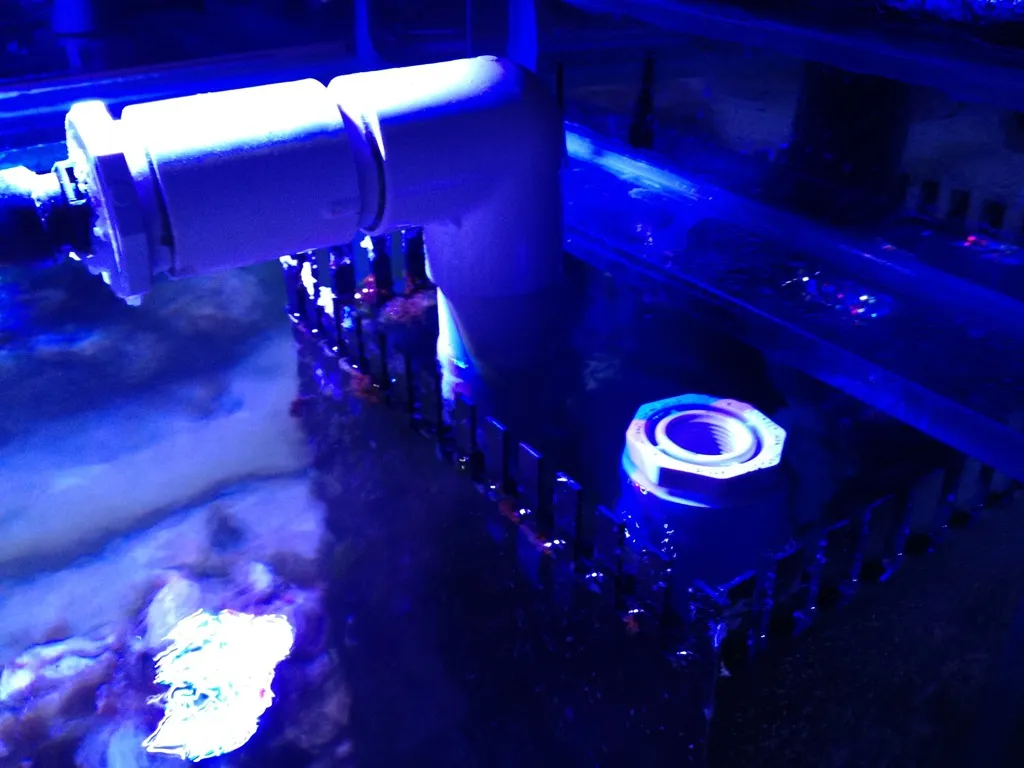

I also took this opportunity to add more lochline to my return line, and switched to flattened outputs, as the rounded outputs I had were creating this nasty jet of water that blasted one area of my rock:

And finally, I've started replacing some of my lost corals while everyone is in QT. Getting all the fish out meant removing 100% of the rock, so I got the chance to re-scape. I took that opportunity to remove some of the base rock that made my tank look too packed, and I tried to follow a more balanced "2/3 to 1/3" aesthetic ratio that you normally follow for photography while balancing the two sides. I like this much better:
